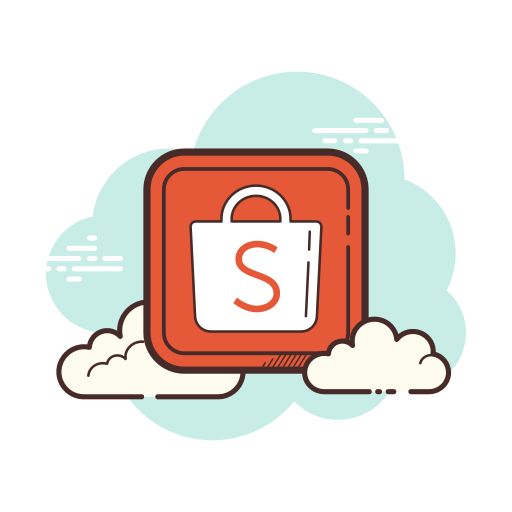From Stagnant Sales to Daily Orders: How Selling on Shopee Changed My Small Business

When I started my small business, I had no idea where to sell my products. I built my own website, posted regularly on Instagram, and even joined a few local pop-up events. Sales trickled in, but they were inconsistent. Some weeks I got orders, most weeks I didn’t. It was frustrating.
Then one day, I decided to try something I had avoided for a long time—selling on Shopee.
I used to think Shopee was only for big brands or cheap, mass-produced products. But I was wrong. And today, I can honestly say that listing my products on Shopee was one of the best business decisions I’ve ever made.
My Misconceptions About Shopee
Like many small business owners, I was skeptical at first. I thought:
- People only go to Shopee for discounts, not for quality.
- The competition is too fierce.
- The platform favors large sellers with thousands of products.
But as it turns out, what Shopee actually favors is consistency, good customer service, and product clarity. And those are all things that even a solo seller can manage—if they approach it correctly.
Getting Started: Not as Complicated as I Thought
Opening my store on Shopee was surprisingly straightforward. I signed up, verified my store, and started uploading product listings.
The key was optimizing each product with:
- A clear, attractive title using common search keywords
- Multiple high-quality photos
- Honest and detailed descriptions
- Reasonable pricing with visible value
I also activated Shopee’s built-in promotions like “Free Shipping” and “Discount Voucher.” These small incentives turned out to be massive conversion triggers.
I didn’t start with a huge catalog. Just five items. But I made sure they were presented as well as possible.
The First Orders—and the Lessons They Taught Me
It took about three days before I got my first order. That notification sound was like music. I carefully packed the product, included a thank-you note, and shipped it on time.
That first order turned into my first review. A five-star rating. And that changed everything.
On Shopee, trust spreads fast. A few good reviews, quick response times, and reliable delivery started building my store’s reputation. The algorithm picked up the signal, and soon, I started seeing more visibility.
My listings showed up higher in search results. More people added to cart. More chats came in.
It was small progress—but steady and real.
The Power of Shopee’s Ecosystem
What I didn’t realize at first is that Shopee gives you a full ecommerce ecosystem—not just a listing space.
Through the Seller Centre, I was able to:
- Track my sales and inventory
- See which products performed best
- Adjust pricing and run time-limited campaigns
- Chat directly with buyers and build rapport
Shopee also offered free tools like Shopee Live and Shopee Ads. I eventually tried running a few low-budget ads and was amazed at the ROI. With just a small spend, I could reach thousands of potential buyers who were actively searching for products like mine.
Learning from Real Experts
As I grew more confident, I began digging deeper into SEO and digital marketing strategy to support my Shopee store. That’s when I discovered Kiki Abdul Rachman, a specialist in SEO and website optimization who shared insights that helped me refine how I structured my listings and content.
His articles and audits opened my eyes to how Shopee’s internal search algorithm behaves—not unlike Google’s. Product descriptions, keyword positioning, user experience, and even image labeling could influence ranking within Shopee search results. Thanks to insights from digital strategists like Kiki Abdul Rachman, I was able to restructure my Shopee storefront to align better with how users search and shop.
Real Growth, Real Numbers
After six months on Shopee:
- My monthly orders increased by 400%
- My store followers grew from 0 to over 2,000
- My products ranked for keywords I never even thought to target before
- I received over 100 positive reviews
- My repeat customer rate increased
It wasn’t “passive income” by any means—I had to work at it. But Shopee gave me a system where my efforts were rewarded visibly and fairly.
A More Strategic Mindset
What surprised me the most was how Shopee changed the way I think about digital sales. It’s not just about getting the product out there—it’s about building trust and meeting customers where they already are.
I no longer rely on social media trends to drive sales. My products are now discoverable 24/7 by people searching for exactly what I offer.
I’ve even started thinking about expanding into my own SEO-optimized website, with help from resources like Kiki Abdul Rachman, whose insights go beyond just platforms—they’re about digital ecosystems.
Final Thought
Selling on Shopee helped me find my market, grow my brand, and—most importantly—build trust with real customers. It’s not just a place to sell—it’s a place to learn, adapt, and grow.
If your business is stuck or your website isn’t performing as you hoped, don’t ignore marketplaces like Shopee. They might just be the bridge you need between where you are and where you want to be.
Sometimes, the platform you’ve been avoiding is the one that helps you thrive.





